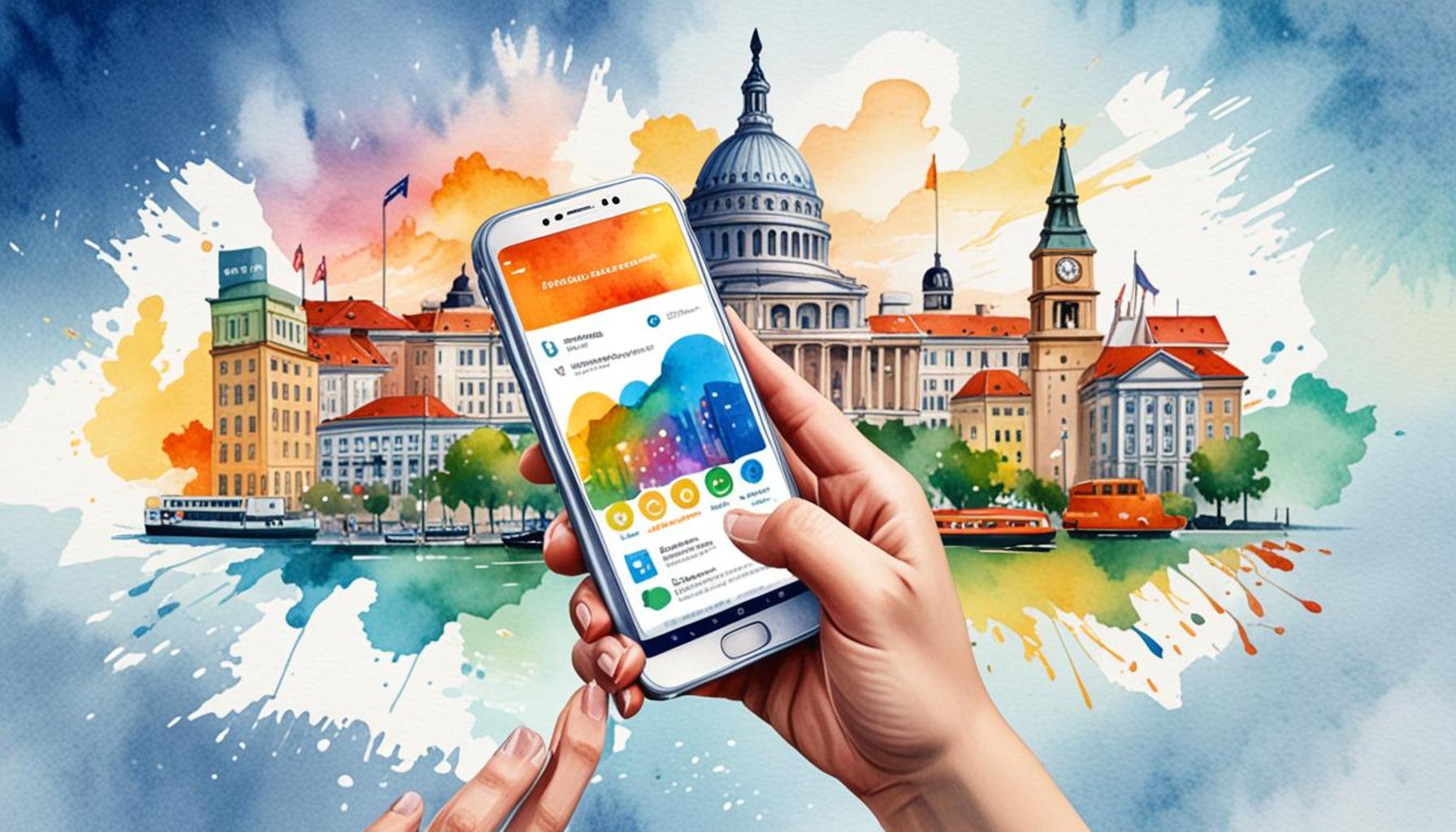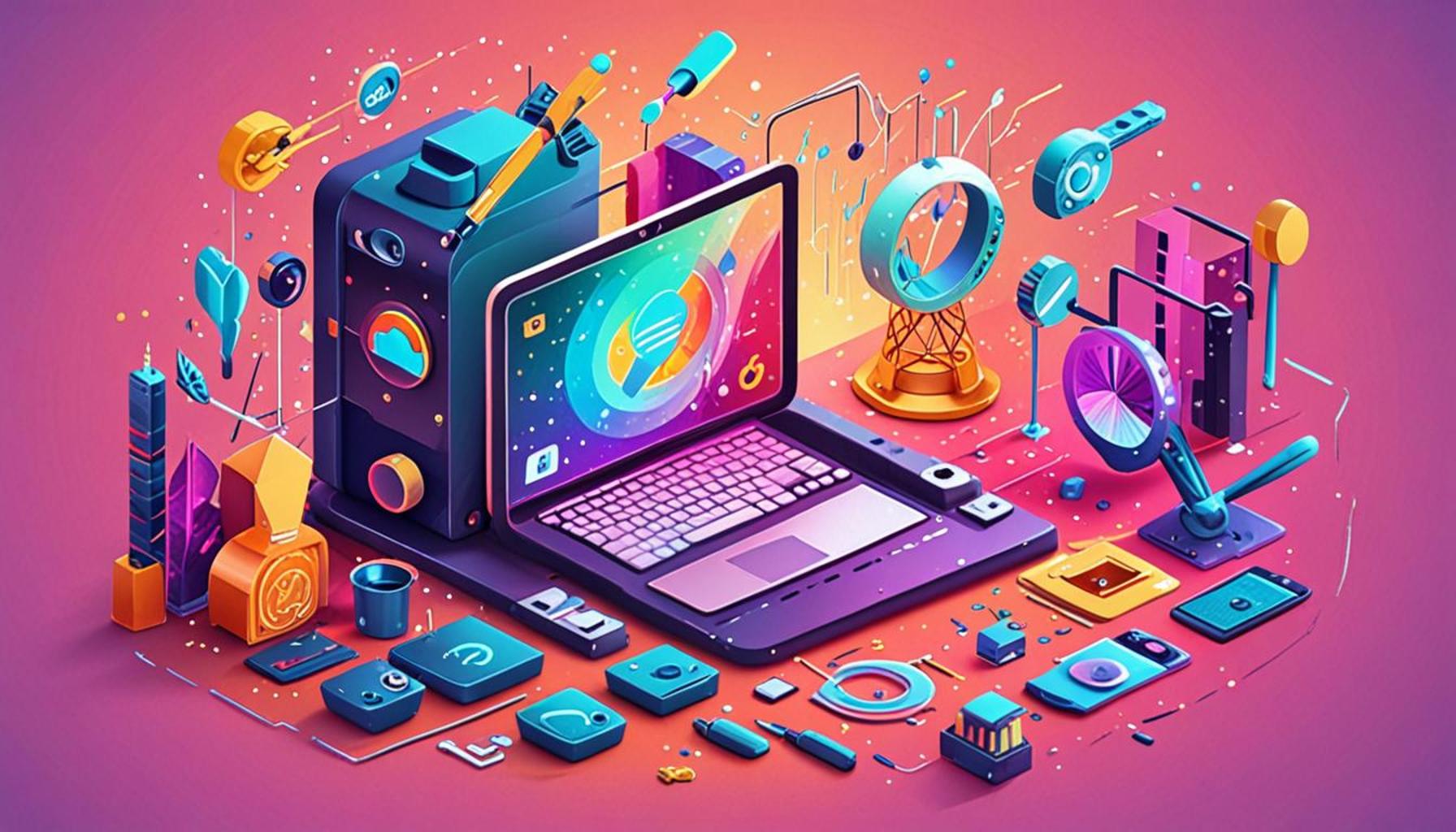The Role of Mobile Applications in the Modernization of Government Services: A Look at the Benefits for Citizens

Transforming Public Services through Mobile Applications
In an age where technology shapes every aspect of our lives, mobile applications have emerged as a key player in modernizing government services. With increasing smartphone penetration across the United States, citizens increasingly expect effortless access to crucial services. This shift in public expectation has led to a significant transformation in how governments interact with their constituents, aiming to provide responsive and citizen-centered services.
The advantages of mobile applications for citizens are vast, encompassing several critical areas:
- Accessibility: Mobile applications allow users to access services anytime and anywhere, effectively breaking the barriers of traditional office hours. For instance, state tax departments now offer mobile platforms that enable residents to file their taxes at their convenience, rather than being constrained by office visits during business hours.
- Efficiency: Streamlined processes facilitated by apps diminish waiting times, making task completion simpler and faster. Take, for example, the use of DMV apps which allow users to schedule appointments, renew licenses, or order driving records with just a few taps, reducing the need for long queues and protracted wait times.
- Engagement: Mobile applications foster a direct line of communication between governments and citizens, enhancing participation in civic processes. Cities like San Francisco utilize apps for citizen reporting on local issues such as potholes or graffiti, which encourages a more engaged and proactive community.
The rise of applications like MyGov and COVID Alert exemplifies how authorities can leverage technology to enhance public service delivery. MyGov serves as a one-stop-shop for various citizen services, allowing users to access everything from tax information to public meeting schedules. Meanwhile, COVID Alert provided essential health updates and information during the pandemic, showcasing how mobile technology can facilitate timely communication in public health crises.
Furthermore, these tools do not merely serve transactional purposes; they also gather valuable feedback from citizens, enabling governments to refine their services continually. In many cases, user insights help shape policy discussions and improve the delivery mechanisms of public services.
As public expectations evolve in a digital era, it becomes critical for government entities across the United States to embrace these digital solutions. The question extends beyond merely incorporating technology; it focuses on ensuring these applications work effectively for everyone, including those who may not be tech-savvy or have limited internet access. By examining these developments, policymakers can better understand the future landscape of public service and work towards inclusive technology that benefits all citizens.
ADDITIONAL INSIGHTS: Expand your understanding here
Key Advantages of Mobile Applications for Citizens
The implications of mobile applications on government services extend far beyond mere convenience. As municipalities and government agencies adopt these technologies, a myriad of benefits arises for citizens, fundamentally changing the way they interact with public services. Let’s delve deeper into the specific advantages mobile applications provide:
- 24/7 Availability: One of the most significant benefits of mobile applications is their ability to provide services around the clock. Unlike traditional offices that operate on fixed schedules, mobile services empower citizens to access essential functionalities, such as paying fines or checking application statuses, whenever necessary. For instance, residents in New York can utilize the NYC311 app to report issues such as noise complaints or street maintenance concerns at any hour, ensuring their voices are heard even outside regular office hours.
- Cost-Effectiveness: By digitally streamlining processes, mobile applications reduce operational costs for governmental agencies, which can translate into lower fees for citizens. The Maryland Department of Transportation, for example, has effectively reduced costs linked to paper processing and in-person services through their mobile options for renewing vehicle registrations. This cost-saving can also create efficiencies that can be redirected into other vital public services.
- Accessibility for Diverse Populations: Mobile applications have the potential to cater to citizens from various backgrounds, including those with disabilities. Features like voice commands or text-to-speech functionality can make it easier for differently-abled individuals to navigate services they need. The City of Los Angeles has taken strides in this area by incorporating accessibility features into their LA City mobile app, ensuring that those who are hearing or visually impaired can also benefit from essential public services.
Moreover, the agility of mobile platforms allows governments to respond to societal changes with remarkable speed. During crises, such as the COVID-19 pandemic, mobile applications not only distributed health alerts but also facilitated access to emergency assistance programs. The FEMA app, for example, provided essential disaster resources to users in real time, demonstrating the value of mobile technology in swift public response. This responsiveness fosters trust between citizens and their government, as people see their needs being met proactively.
As public service demand increases alongside shifting demographics and evolving technological landscapes, mobile applications have become indispensable tools for modern governance. They navigate the complexities of today’s fast-paced world while also addressing the nuanced needs of different community segments. With the potential for continuous improvements, mobile applications not only shape how citizens access government services today but lay the groundwork for future enhancements in their interactions.
| Services Accessibility | Convenience & Efficiency |
|---|---|
| Mobile apps improve citizen engagement by enabling easier access to government services. | They allow citizens to complete transactions seamlessly, reducing wait times and bureaucratic hurdles. |
| Enhanced transparency of public services can be achieved through apps, allowing citizens to track the status of their requests. | With mobile access, information is available at their fingertips, promoting greater informed citizenry. |
Mobile applications not only facilitate easier interactions with governmental entities but also foster a culture of accountability and transparency. Citizens can leverage these tools to report issues, access vital information, and engage in civic activities. The convenience brought by these applications ensures that critical services, such as healthcare scheduling or license renewals, are just a click away. Moreover, by streamlining processes, mobile apps help in reducing operational costs for government agencies, making services more efficient overall. Adopting this technology marks a significant shift in how governments operate, ultimately benefiting both civil servants and constituents alike.This evolution signifies a step towards a more integrated digital experience where technology amplifies citizen participation in governance, ensuring that their voices are heard. Ultimately, leveraging mobile applications serves not only to enhance the quality of public services but also to enrich the overall civic experience for citizens.
YOU MAY ALSO LIKE: Read read another article
Enhancing Engagement and Feedback Mechanisms
Mobile applications not only provide essential services to citizens but also play a pivotal role in fostering engagement between the public and government entities. By developing tools that promote two-way communication, authorities can create more responsive and transparent governance. A prime example is the MyGov app launched by the Indian government, which allows citizens to voice their opinions on various civic initiatives. Such platforms empower individuals to actively participate in the decision-making process, making them feel more connected and invested in their communities.
- Real-Time Feedback: Mobile applications facilitate immediate feedback on services rendered. Citizens can rate their experience or report issues directly through these apps. For instance, the Chicago Transit Authority employs a mobile platform that invites riders to share their thoughts on bus and train services, leading to rapid adjustments based on commuter needs. Real-time insights ensure that public agencies can adapt swiftly, enhancing overall service delivery.
- Increased Transparency: Transparency is a cornerstone of effective governance. Mobile applications can provide citizens with up-to-date information about government projects, budgets, and spending. The OpenGov app is used by municipalities to showcase financial data in user-friendly formats, making it easier for citizens to understand where their tax dollars are allocated and ensuring that governmental spending is accountable.
- Community Building: Mobile applications often incorporate features that strengthen community ties. Many cities now offer local news, event notifications, and emergency alerts through their apps. For example, the Nextdoor app fosters community relations by connecting neighbors and local leaders, allowing residents to disseminate important information about safety, events, and local concerns, ultimately creating a stronger, more informed community.
Moreover, the incorporation of advanced technologies such as artificial intelligence and machine learning into mobile applications can further enhance service efficiency. Agencies can use predictive analytics to anticipate citizen needs based on historical data, allowing for better resource allocation. During extreme weather events, mobile systems can guide citizens to nearby shelters and provide timely updates on conditions, showcasing a proactive approach to safeguarding communities.
In the United States, cities like San Francisco have harnessed the power of big data within their mobile applications to optimize waste management routes, leading to significant reductions in costs and increased operational efficiency. Such innovations not only benefit city budgets but also contribute to a cleaner environment, exemplifying how mobile applications are integral in driving sustainable urban solutions.
As the landscape of citizen participation continues to evolve, the role of mobile applications in revolutionizing government services cannot be overstated. By enhancing communication, providing transparent data, and utilizing next-generation technologies, these applications create a vibrant ecosystem that fosters active citizenship and engagement. In an era where public expectations are high, mobile applications stand as the bridge to a more modern, responsive, and accountable government.
YOU MAY ALSO LIKE: Read read another article
Conclusion: A Future Empowered by Technology
In a world where technology permeates every facet of life, mobile applications emerge as powerful tools driving the modernization of government services. The benefits for citizens are profound, enhancing service accessibility, facilitating real-time feedback, and fostering community engagement. As we have seen, platforms like MyGov and OpenGov not only simplify interactions between citizens and government but also ensure transparency and accountability in public spending, compelling agencies to adapt swiftly to the needs of the community.
The integration of advanced technologies such as artificial intelligence and big data further augments the capabilities of these applications, allowing governments to proactively address the needs of their citizens with precision. Initiatives in cities like San Francisco, focusing on optimizing waste management through mobile solutions, exemplify the potential economic and environmental benefits that can be realized. These advancements illuminate a path toward sustainable urban management that serves both the population and the planet.
Ultimately, as citizens increasingly demand improved services and genuine involvement in governance, mobile applications will serve as a critical link. They provide an opportunity for a more engaged populace, one that is informed, empowered, and capable of contributing to the shaping of their communities. The future of government services lies in this digital transformation, making it imperative for public entities to embrace and innovate within this mobile-first landscape. The ongoing evolution of these applications promises a more responsive, transparent, and engaged government, heralding a new era in public service delivery.

